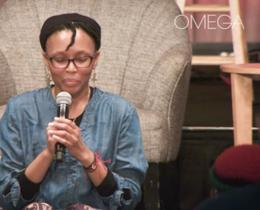The transition back to everyday life can be the most important aspect of your retreat. It is the bridge between your truest self and the self that braces against life. Irini Rockwell shares five essential guidelines for making a smooth transition.
Once retreat is over, how do you avoid resuming your “same old” life? How do you return to your life with the lessons learned from retreat intact?
Connecting back to loved ones and your workaday world can be quite confusing. You might feel shaky upon returning, leaving behind a warm, protected retreat center to meet a less friendly, speedier world. You might go through a period of groundlessness, asking, “Who am I? How do I want to be in the world?”
You may feel discomfort as a result of opening your heart, making you feel vulnerable, irritated, and cranky. You might become arrogant, feelingsuperior because of what you have experienced. You may have increased idealism and immediately try to turn insight into action by designing a self-improvement plan.
Sometimes, the deeper you have gone, the sadder you are upon leaving. The openness you have felt is like having a love affair. Leaving is heartbreaking. Having experienced a new depth, it is important to realize you can choose to mindfully re-enter your life.
5 Guidelines for Life After Retreat
1. Don’t make a big deal. In making a big deal of retreat, you actually lose its essence. You may feel you “got it” so you want to record it, put it in a box, and label it. When you do this, the vividness of the experience will be replaced by concepts. The truth is, even big moments need to be seen as ordinary. Then, they can be translated into life and there will be continuity. Try not to talk about your retreat too much; rather, share your experience in simple ways—mostly by just being.
2. Re-enter slowly. Do as little as possible. This will allow you to return with mindfulness and awareness. Take the time to pay more attention to the details of your life. Be ordinary. Stay in the moment.
3. Protect your open heart from shutting down. Remember your intention, or purpose, for going on retreat. Use the practice you learned during retreat to stay open. And, use anything that triggers you to remind yourself to stay open.
4. Maintain a practice of mindfulness awareness. Sitting meditation, even for 10 minutes each day, will create continuity between your retreat and your everyday life. It is foundational. You also can take walks, staying in the moment and paying attention to your sense perceptions.
5. Seek out teachers who incorporate transition into their retreats. It may happen that you feel your personal intensity only after retreat is over. Find a retreat leader who is available after the program ends for extended support.



